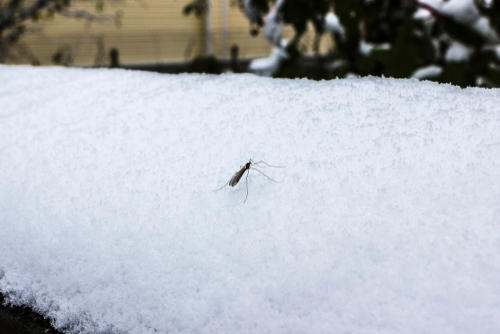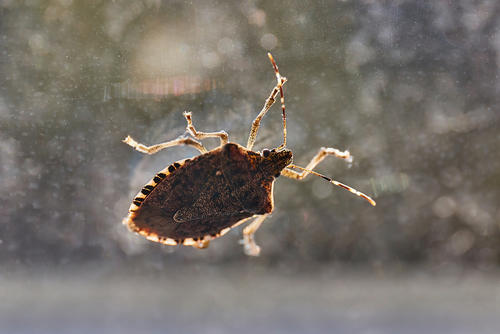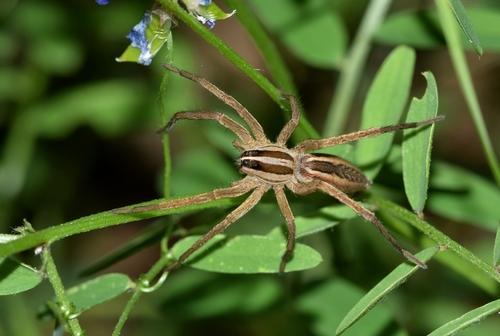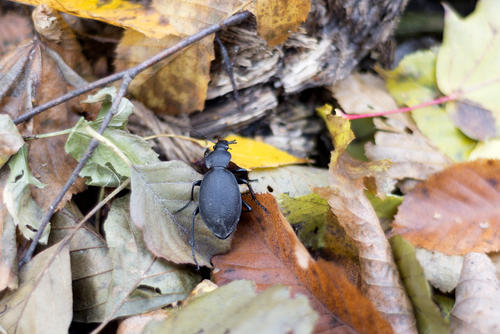The Seasonal Pest Cycle, Month by Month
The yearly seasonal shifts bring specific challenges to pests living outdoors. Whether it’s due to heat, cold, moisture, or drought, your house can quickly become a pest’s ideal home. We’re all familiar with some of the more common characters, but there could be others that you haven’t considered. So let’s get into what to watch for each month of the year.
Winter Pests

January
Many of the pests you see actually entered your home in the fall but are showing themselves now. These pests span the size spectrum, from tiny spiders, crickets, and other insects to rodents like mice and even larger mammals, like raccoons. Of course, the best way to prevent all pests during the winter is to spend time winterizing the home and sealing up any potential entry points. But if you’re already noticing signs of pest activity indoors, your best bet now is to call a professional pest removal or extermination company. They’ll be able to swiftly and smoothly handle infestations.
February
We typically associate flies with summer cookouts and outdoor life. But in the fall and winter, cluster flies enter your home, seeking shelter from cold weather. If you aren’t already seeing them buzzing around the home, they may be hunkered down inside your walls, attic, or crawlspace. Cluster flies are typically larger than average house flies, with specific black and gray markings. They aren’t hazardous to humans, unlike normal houseflies, but they are still nuisances. On the other hand, cockroaches do pose a threat, and they may come out of hibernation to make an appearance on warm days. Pest control services can handle both of these common insects.
March
March is the beginning of the termite swarming season in Ohio and elsewhere. It generally lasts through early May, but your home’s artificial heat or warm temperatures following rain could cause swarming even earlier. That said, termites can cause damage all year long, whether you see them or not. One sign to be on the lookout for is pinhead-sized holes in sheetrock walls. Ohio is in a moderate to heavy infestation zone, so take time to educate yourself on the signs and don’t discount anything unusual.
In March, ants also begin to be trouble as they travel through your home on a food-finding mission. This is also the ideal time of year to start thinking about preventing fleas, ticks, mosquitoes, and other unsavory pests from ruining your enjoyment of time spent outdoors come summertime.
Spring Pests

April
Your home is full of two things that pests love: fabric and food. And in April, carpet beetles, clothes moths, and pantry pests like flour beetles, meal moths, mealworms, and even crickets and roaches can wreak havoc on both. Be sure to regularly inspect stored clothing, dry food, and dried herbs and spices for pests. Storing dry food items in airtight containers is one good prevention measure. Your professional pest control company can suggest more tactics to keep these pests at bay.
May
Flea and tick populations can peak and dip with the weather, but they’re always a threat in some areas. May is when they kick into high gear, and that’s especially true if you haven’t already taken preventive measures in your yard and property. If you’re starting to see them on pets or finding them on yourself or your family members, it’s time to take action to prevent possible disease transmission.
June
Warm summer months are prime time for pests to feed and breed. If issues aren’t handled immediately, they could perpetuate new generations. Ants may find their way back inside to avoid rain, and spiders take advantage of increased prey, frequently indoors and outside. Termites may have swarmed earlier, but now they’re often chomping away, weakening your home’s structure. Taking preventive steps like caulking and sealing entry points, screening vents, weatherproofing doors and windows, and keeping debris, mulch, or vegetation away from home are vital steps to prevent infestation, both now and later in the year.
Summer Pests

July
July is the point in the year when many insects have reached the adult stage of their life cycle and now focus on laying the next generation of eggs. Whether they’re Japanese beetles, June bug grubs in the lawn, or a flying pest that could sting, bite, or suck, the goal is to make your home and immediate surroundings inhospitable to pests that could do you harm. Therefore, prevention is key in July.
August
This time of year, you’ll see many flying insects around, collecting pollen and nectar in your gardens or preying on other insects outdoors. Bees and wasps generally aren’t much of a threat unless provoked, but that can quickly happen unintentionally. Yellowjackets can be aggressive, though, putting a damper on time spent outdoors as summer begins to fade. Try to steer clear of insects going about their business in the gardens, but if they start to encroach on your leisure space, now is the time to act.
September
As the summer winds down, day length shortens, and temperatures begin to descend, insects know full well what’s coming. Along with plenty of other types of insects, crickets can seem to be everywhere and could show up in your home in large numbers. Another culprit could be flying ants, which are often confused with the very damaging termite that swarms in spring – to an untrained eye, they can look similar. September is an excellent time for preventive spraying done by a qualified professional.
Fall Pests

October
During October, the migration march indoors continues for paper wasps, elm leaf beetles, boxelder bugs, cluster flies, stinkbugs, and others, depending on which populations are prevalent in your area. Hopefully, you’ve used the warmer months to seal up exterior gaps or potential entry points. If not, now is the time to shore up your home’s perimeter using basic defenses like caulking, screening, and threshold inspection.
November and December
The winter months are more or less a long, slow continuation of October. On those few warm days, watch for insect activity and be aware of new visitors. During this time of year, mice could also seek out your home for shelter, warmth, and a steady source of food and water. As their natural food sources decline and the cold takes hold, mice and other rodents – like rats or squirrels – are more likely to be driven indoors. Prevention is the best protection against these invaders. A quick scan will ensure that roofs, floorboards, eaves, and other potential entry points are solid and sealed.
Prevent and Control Pests with Cleveland Bee Removal
Clearly, the list of potential pests that could share your home is long and shifts across the seasons. Equally as lengthy is the selection of methods, products, and tools that can help keep your home pest-free. There are many options readily available on retail shelves, but often these products are ineffective at best and harmful at worst. Avoid misdiagnosis or overtreatment by working with a pest control company that understands local seasonal cycles and pest populations.
Cleveland Bee Removal is happy to help Cleveland, Ohio property owners diagnose and address pest issues of all kinds. Remember, prevention is always easier than handling an infestation, but know that we’re here for you either way. So reach out today to inquire about our pest control services and set up a free consultation.

